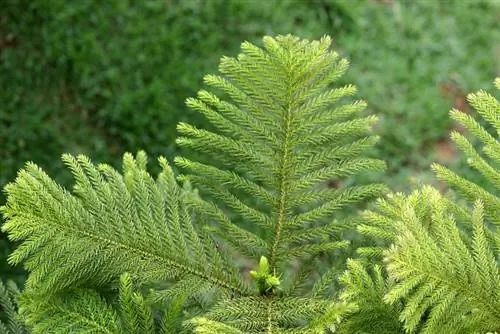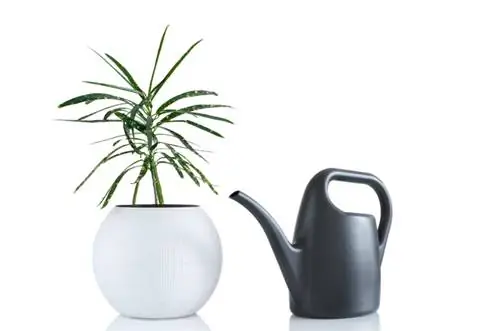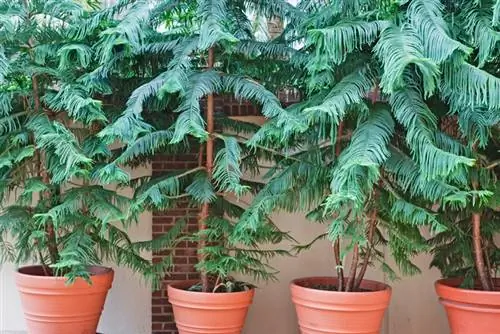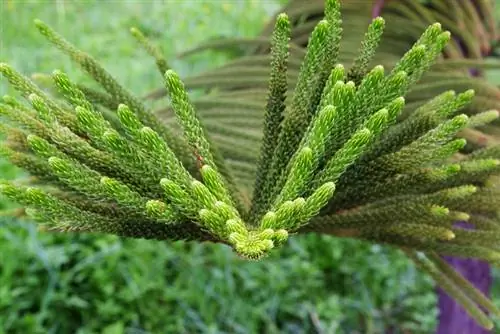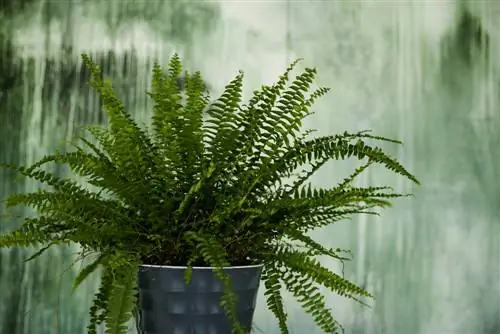- Author admin [email protected].
- Public 2023-12-16 16:46.
- Last modified 2025-01-23 11:20.
Indoor firs (botanically Araucaria heterophylla), also called Norfolk fir, can be very decorative because they grow very evenly. However, the trees that come from Australia are not ideal houseplants for beginners because caring for them requires a lot of specialist knowledge. How do you properly care for the non-toxic indoor fir?
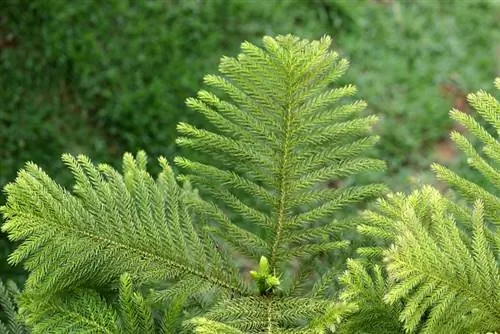
How do you properly care for an indoor fir?
To successfully care for an indoor fir, you should water regularly when the top layer of the substrate has dried out, fertilize every two weeks during the growing season, repot the plant every two to three years and provide the fir with a bright, draft-free location. Avoid direct sunlight and ensure sufficient humidity.
How do you water the indoor fir correctly?
Indoor firs neither tolerate completely dry root balls nor can they cope with waterlogging. Always water the indoor fir only when the top layer of the substrate has dried out. Never leave water standing in the saucer or planter.
Use soft, stale tap water for watering.
In the summer, the indoor fir needs to be watered more frequently. It is also recommended to regularly spray the branches with soft water to increase the humidity. In winter, indoor firs are only watered moderately so that the root ball does not dry out completely.
How often does it need to be fertilized?
Fertilization is carried out from April to September with fertilizer for rhododendrons or azaleas. It is enough if you fertilize the indoor fir every two weeks.
When should indoor firs be repotted?
You have to repot an indoor fir every two to three years. It's time for a new pot when the roots grow out of the top or bottom of the container. Repotting takes place in early spring.
Does an indoor fir need to be cut?
Basically, you should not cut an indoor fir as it will have difficulty recovering from it. That's why indoor firs are not suitable for keeping as bonsai.
Which care mistakes are common?
- Too much sun
- location too dark
- too moist substrate
- low humidity
- Draft
- frequent touching
What diseases and pests can occur?
Illnesses hardly occur. It is usually a care error when the indoor fir loses branches, the needles change color or the branches hang down.
Root rot causes problems for the indoor fir if the substrate is too moist. To avoid trunk rot, indoor firs should never be planted deeper after repotting than they were before.
Thrips may occasionally occur. Rinse the indoor fir under the shower and then use a pest repellent.
How is the indoor fir properly overwintered?
Indoor firs are not hardy and must be kept frost-free over the winter. However, they cannot be kept in the living room all year round because the trees prefer significantly lower temperatures in winter.
In winter, place the indoor fir in a bright, not sunny place with temperatures between five and ten degrees.
Tip
Indoor firs are not a substitute for a Christmas tree. Your location requirements in winter are not compatible with the warm climate of heated living rooms. They also don't like it when the branches are touched too often or even decorated with jewelry.

